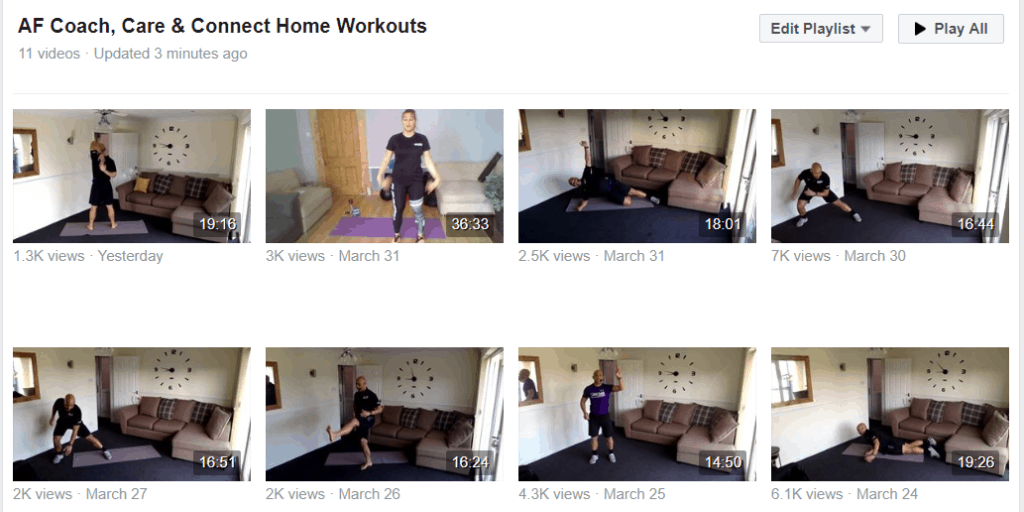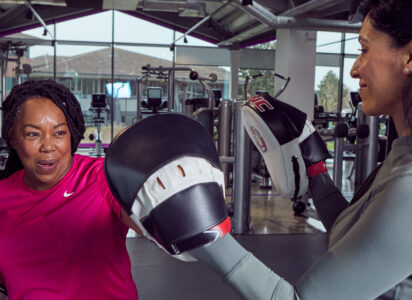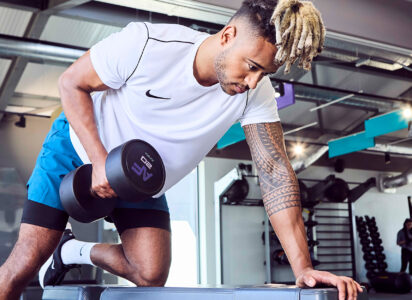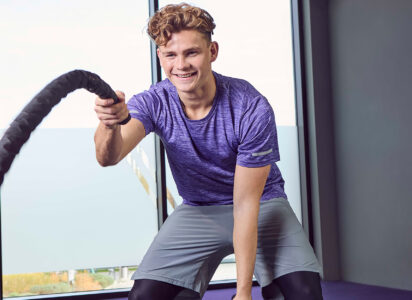Sitting for long periods of time is a major contributing factor to muscular-skeletal injury (mainly back pain) and the slowing down of your metabolic rate. Often people who sit for long periods don’t realise until they have related symptoms or have already gained excessive weight. Short term signs could be tight muscles (poor flexibility and posture), feeling tired or lethargic after a working day, craving sugar for energy or ‘niggling’ injuries that you are picking up regularly.
What can you do to ensure you are getting enough movement throughout the day and to keep your body functioning?
The easiest way is to incorporate strategies into your working day and to create habits that involve movement.
Here are some ideas:
- Transition to a stand-up desk (if possible) or move to another location to work which is higher and allows you to stand, sitting just isn’t as good for you
- Set a computer or phone reminder each hour that prompts you to get up, go for a walk and stretch
- Never eat at your desk! This isn’t good for your mental or physical health. When the weather allows you to, get outside for some essential vitamin D and fresh air
- Leave your workspace during breaks. If you can, go outside or into another room
- Keep your trainers/running shoes on hand. If you always have access to the correct footwear you might be more likely to put them on and have a stroll on your lunch break
- Stand up and stretch. Rotations of your spine and shoulders, stretching the muscles in your legs or even a few marches on the spot will at least bump the blood around your body and get some oxygen flowing
- Increase water intake. This will reduce your cravings for high sugar foods (which make you feel lethargic), improve your health and lead to a few extra trips to the toilet (every step counts)
- If you’re on back to back calls, change location each time to keep yourself moving
Along with these tips, it would also be helpful to stretch and improve movement around the key muscles in your hips such as your glutes, hip flexors, quadriceps, hamstrings, inner and outer thighs. These muscles rely upon regular movement, strong muscles and activity. Once left in the same position for long periods they become less active, slow at responding and weaker.
Small space exercise
Exercise in a small space can be effectively performed and very rewarding. You can easily apply some different training methods and systems to simple exercises and improve your strength, muscle mass and lose body fat.
Here are some simple variations that you can apply to bodyweight exercises such as lunges, squats and push-ups:
Isometric holds
Holding the muscle in a contracted position for a period. Forcing the muscle to work harder in that position.
Descending and ascending ladder training
Choose 2 exercises (exercise A and B).
Exercise A starts off with a high number of reps (for example 10) and the B exercise starts off with 1 rep. Each set performed of both A followed by B exercises exchange the number of reps. (9-2, 8-3, 7-4 etc). Meaning that the A exercise reduces but the B exercise increases.
OMEM
Which stands for ‘on the minute, every minute.’ Choose 2-3 exercises and perform a small number of repetitions for each exercise (for example 5) and repeat the 5 reps OMEM for a set period. Try 20 minutes. That should do the trick! Rest for the remaining time within the minute.
Quad/giant sets
Choosing 3 or more exercises for the same muscle group, action or area within the body. This creates a greater overload and much faster fatiguing of the body. For example squats, lunges, glute bridges, single-leg balance Romanian deadlifts. Rest for less than 60 seconds after each set and repeat multiple times.
Escalating density training
Choose 2 muscles and alternate between the 2 for a 15-minute period, no rest. The aim is to get as much work completed within the 15-minute period. You can begin with 6-8 reps per exercise and as you fatigue you will need to reduce the number being performed. But the workout must continue for the total time. The aim is to trick the muscles into recovering faster and to push yourself to failure.
German Volume Training
Performing 10 repetitions, 10 sets with no more than 60 seconds rest in between sets. This is traditionally a weight lifting system which requires around 60% of your maximum 1RM. Although you could modify this and use the principals for personal use. For example, 10 sets of 10 Burpees with a 20 second rest might really push you to your limit. Manipulate the time and exercise to suit your ability, space and time.
What else could you use?
There are plenty of options available to you. Sometimes creativity is the only barrier.
Towels on a smooth surface are perfect for sliding exercises such as mountain climbers. Bottles of water are perfect for pressing actions, ab exercises or general lifting if you have a few of them or a case. Your bed can be used for glute bridges and hip thrusts. Chairs are great for step ups or to incline your feet in a pushup.
Walking lunges across your room or isometric wall sits are other great exercises which you could incorporate. Remember there are some small and affordable products available such as resistance tubes, mini bands or even a suspension trainer.
If you need more workout inspiration you can check out our Instagram or Facebook pages. We run live workouts every day and share a whole range of health and fitness related content every week.
Members can also use our Anytime WorkoutsTM app to access a range of no equipment exercises!
If you want to catch up on our previous workouts you can explore our workout playlist here!







